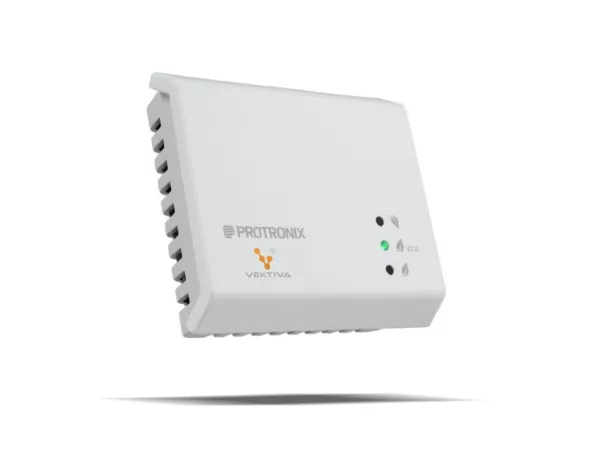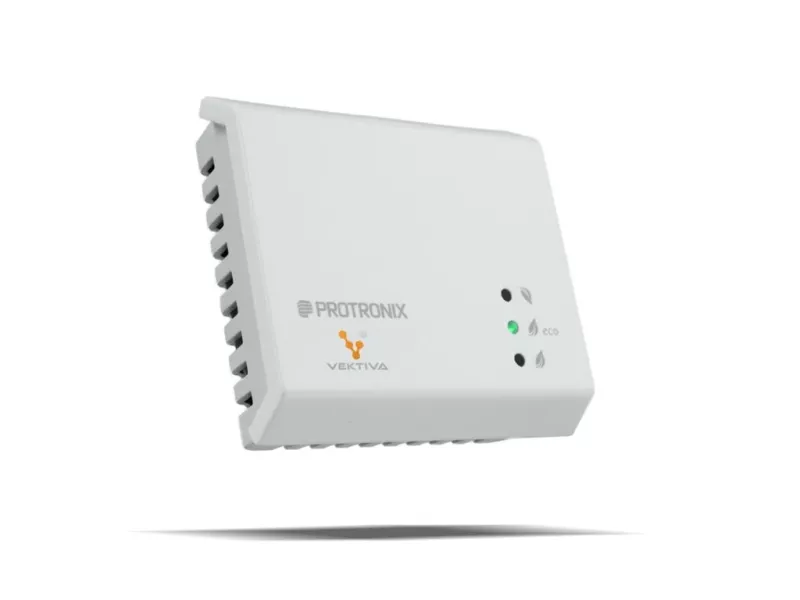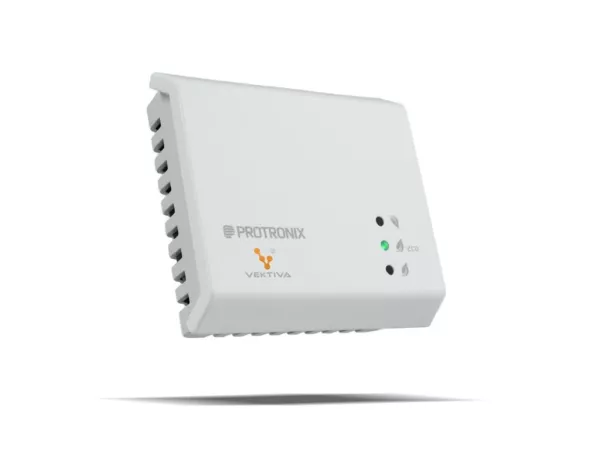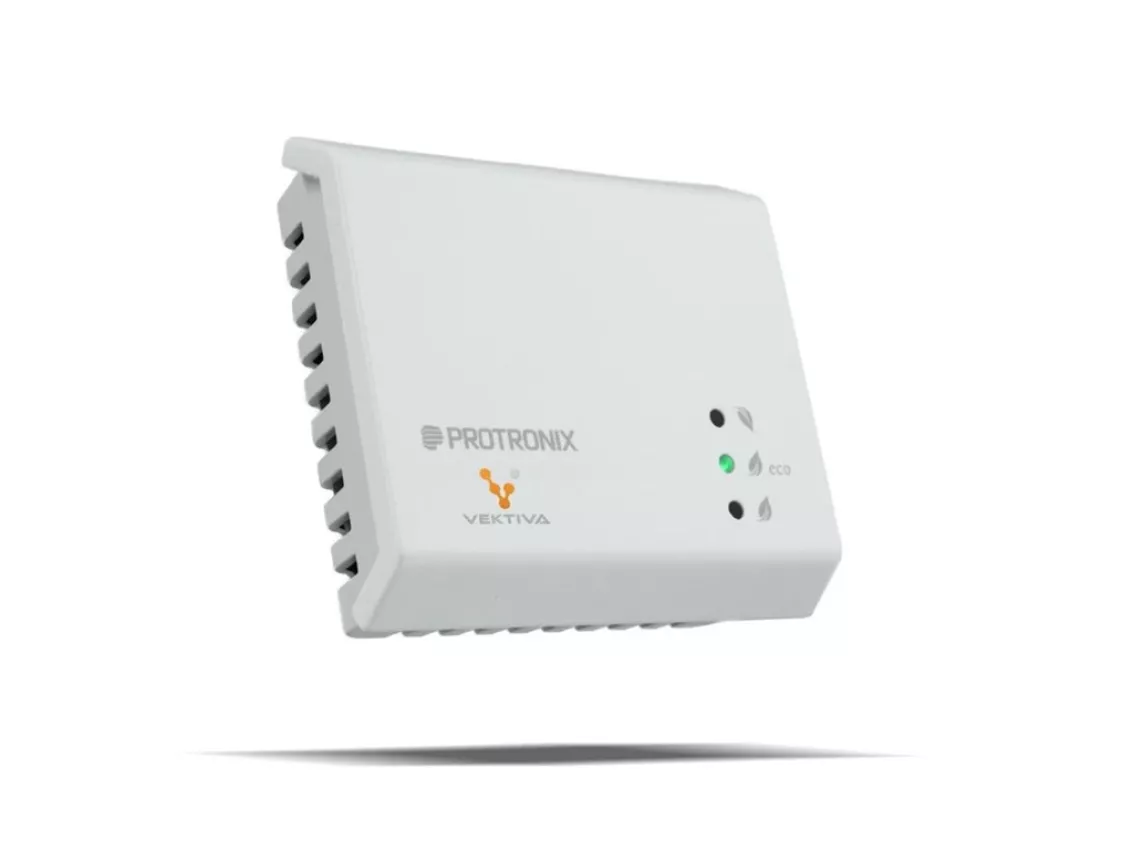Smart CO₂ Sensor for Healthier Air and Automatic Ventilation
This indoor sensor is designed and configured to fully integrate with the Smarwi system for automated ventilation and window control. It is equipped with a sensor that monitors the concentration of carbon dioxide (CO₂) in the air. When the set limits are exceeded, the sensor automatically sends a signal to the Smarwi controller, which opens the window to improve ventilation. CO₂ is a reliable indicator of indoor air quality and room occupancy. High levels (above approximately 1200 ppm) reduce concentration, cause fatigue, headaches, and other discomforts.
Sensor Start
When powered on, all indicator lights briefly flash. Within one minute, the sensor is ready for use, and after four days of continuous operation, it reaches maximum accuracy.
Error Indication
If all indicator lights remain permanently lit at the same time, it indicates a sensor malfunction.
Setting the Relay Switching Level
The relay can be easily adjusted using the rotary selector:
- Adjustment range: 0–100% corresponds to the selected CO₂ concentration range (e.g., 0–2000 ppm).
- Activation: the relay switches on whenever the CO₂ concentration exceeds the set value.
- Deactivation: the relay switches off when the value drops below the set level reduced by the hysteresis (5% of the total range).
- Minimum delay: there is always at least a 2-minute delay between relay state changes.
If the range is set to 0–2000 ppm and the selector is at 50%, this corresponds to a switching value of 1000 ppm. The relay will switch on when this level is exceeded and will switch off when the CO₂ concentration drops below 900 ppm (1000 ppm – 5% of range = 1000 – 100).
Automatic CO₂ Sensor Calibration
The sensor features an automatic calibration function that continuously adjusts measurements and compensates for the aging of individual components. This eliminates the need for manual calibration — the sensor maintains accuracy throughout its lifetime. The function is active when continuously powered.
Air Quality Light Indication
White light – CO₂ concentration below 600 ppm
the air is very clean, CO₂ levels are low — from an energy-saving perspective, it’s not necessary to maintain such a low valueGreen light – concentration between 600 and 1200 ppm
ideal balance between healthy indoor air quality and energy use for ventilation — user comfort is maintainedYellow light – concentration above 1200 ppm
increased CO₂ levels reduce air quality, may cause fatigue, lower concentration, and long-term exposure can lead to health issuesHow Many Sensors Can Be Connected?
Only one sensor can be connected to the Smarwi system at a time. Choose the one that best fits your home’s needs. It’s not possible to use multiple sensors simultaneously.
Advantages of the Integrated Solution
- Safe low-voltage connection
- Automatic monitoring of air quality level
- Direct connection with the Smarwi control button
- Manual ventilation activation by pressing the button on the sensor
- Discreet design suitable for living spaces
You Can Easily Connect the Sensor Yourself in 5 Steps
1. Button Preparation
Disconnect the power connector of the button. Remove the magnetic cover from the back of the device. Unscrew the four corner screws (cross screwdriver PZ1). Remove the back cover of the button.
2. Removing the Original Board
Remove the electronic board with the button and connected cable. Carefully disconnect the rectangular cable from the connector.
3. Sensor Installation
Feed the sensor cable through the opening in the board towards the connector. Connect the sensor connector to the electronic board. The black wire must point away from the power connector! Place the board back into the housing so it fits into its original position.
4. Completing the Assembly
Reattach the back cover to the button. Screw in the four screws. Replace the magnetic cover. Connect the power connector.
5. Setup and Commissioning
Technical Specifications
- Power supply: 12 V DC
- Maximum power consumption: max. 1.5 W
- Selectable range: 400 – 1,000 / 2,000 / 5,000 ppm
- Operating temperature: 0 – 50 °C
- Operating humidity: 5 – 95 % RH
- Storage temperature: -20 – 60 °C
- Expected lifespan: > 10 years
- Automatic LED dimming at night
- Operates using advanced optical NDIR technology













